Jessie Irvine, a junior tennis player of high rank, harbored aspirations for advancement. The year-round training and the demanding lifestyle aligned with her personality, reflecting the dedication required to transition into a professional player.
“I always avoided taking days off,” she informs USA TODAY Sports. “The underlying belief was that somewhere in Russia, a child is likely honing their skills on the field. If I were to take a break, they might surpass me in skill and improvement.”
Although an adversary wasn’t her main challenge, Irvine faced significant obstacles. Around the age of 12, she began experiencing joint pain unrelated to excessive exercise. A medical examination revealed that she had a congenital deficiency of cartilage, which ultimately resulted in a pinched nerve.
For weeks, she would be incapable of raising her arm, not to mention serving.
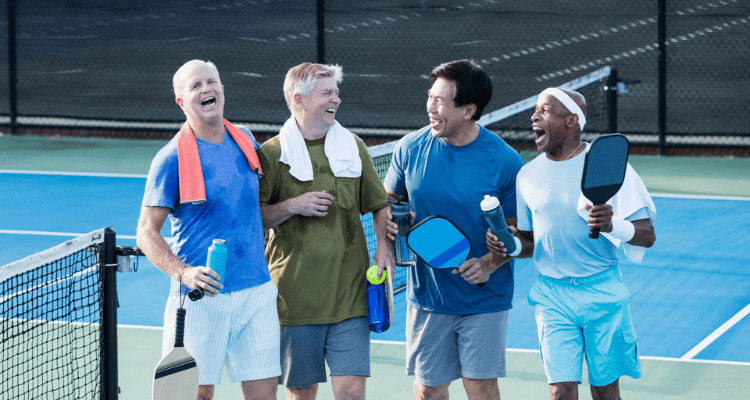
“After a certain period, it became mentally challenging for me to cope with the emotional aspect,” she explains. “I was never aware of when the nerve impingement would occur; it was quite unpredictable.”
Around the age of 20, Irvine decided to end her competitive tennis career. Seeking a fresh beginning, she relocated to Los Angeles, primarily enticed by the warm weather. In this new chapter of her life, she discovered a new love.
This narrative unfolds the tale of an uplifting sport and one of its most ardent participants. It’s a sport that individuals of nearly any age can grasp almost immediately, particularly if they have a background in tennis. Remarkably, the player, who initially struggled to lift her serving arm, has now ascended to become one of the world’s foremost professional players in this sport.
“Irvine, currently holding a top 10 ranking in both doubles and mixed doubles on the PPA tour, reflects, ‘I had already started transitioning to a new phase in my life. I was coming to terms with that reality. Unexpectedly, in my mid-30s, an opportunity to regain competitiveness suddenly presents itself, altering my perspective.'”
Irvine has discovered unexpected happiness in a sport characterized by a peculiar name, involving a paddle, a plastic ball with holes, and a strong sense of community that is uniting millions of Americans.
Pickleball’s “tipping” point
Jason Jamison first became captivated by the enthusiasm for tennis when he manned a booth at a national physical education conference in Chicago in 2005. Similar to Irvine, tennis dominated his life. Although he had participated in the sport during high school and college, his fervor was particularly directed towards the recreational aspect of tennis. Jamison dedicated himself to training volunteers, teachers, and certified professionals on how to effectively introduce the game and enhance its enjoyment.
At the conference, organized by the United States Tennis Association, his employer, there was an impressive exhibition. Despite this, his focus shifted to a less extravagant booth where a queue had formed for Pickleball popularity paddles. The following year, during the Salt Lake City conference, Jamison observed yet another lengthy line for pickleball, prompting him to purchase two paddles.
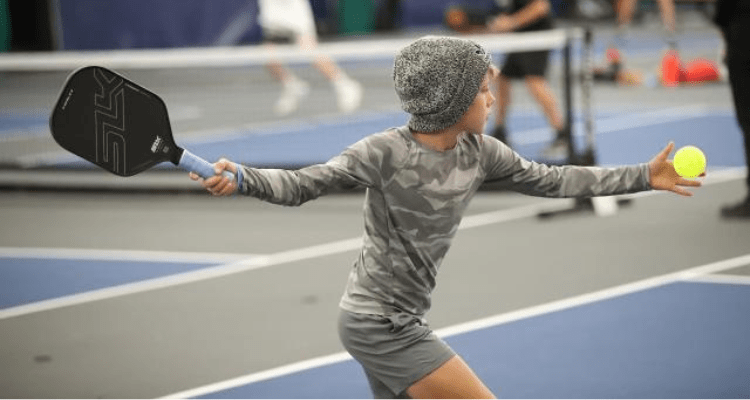
Have you ever delved into the pages of ‘The Tipping Point?’” inquires Jamison, currently serving as a national recreation and coaching consultant for USA Pickleball popularity. “Pickleball reached its tipping point, and it was a significant shift that I witnessed. Almost akin to an astute investor, I recognized something truly compelling, and I thought, ‘This is going to gain immense popularity.’ Surprisingly, the tennis community remained oblivious; they dismissed it, telling me not to concern myself with it. Even in conferences and while working with schools, I observed the rise of pickleball.
After seven years of independently exploring the sport, Jamison attended the USA Pickleball Nationals in Arizona to deepen his understanding of the game.
“It featured a notably humble format for an adult tournament,” he explains. “In comparison to other national sports championships, it was quite modest. However, the atmosphere was incredibly social, resembling a lively party. I captured the experience on video while interviewing participants. It felt like a massive drop-in, open-play festival that eventually escalated to national championships.”
About a year ago marks the tipping point when Pickleball popularity experienced a significant surge in popularity. According to the 2023 Sports & Fitness Industry Association’s (SFIA) Topline Participation Report, pickleball participation in the U.S. nearly doubled, with an 85.7% year-over-year increase and a remarkable 158.6% growth over the course of three years, leading to the sport’s explosive growth.
The report indicates that the number of pickleball players in the United States aged six and above has risen to 8.9 million, showing an uptick from 4.8 million in 2022.
In his book, Malcolm Gladwell discusses the three rules of a tipping point for an idea or product, and one of them is referred to as the stickiness factor, which pertains to its ability to resonate in the mainstream. According to Irvine, Pickleball gained traction because a significant number of individuals discovered its natural appeal and ease of adoption.
“I believe individuals may not have fully grasped the extent of their physical engagement, enjoyment, and competitiveness until they discovered pickleball. Whether winning or losing, the thrill of competition becomes apparent. Consider a 60-year-old individual with no prior sports inclination or background. Once introduced to Pickleball popularity, they find themselves actively scoring points, fully immersed in the game, and expressing newfound excitement, realizing that competitiveness can indeed be enjoyable.”
“The fundamental aspect of it, in my opinion, lies in the concept that individuals can now maintain competitiveness throughout various stages of life. This, I believe, is what makes it so compelling.”
Here’s why Irvine, and so many others, are taking so much pleasure in pickleball:
1. Pickleball is available for immediate play – whether with mom, dad, or the grandparents.
The activity had its beginnings on a badminton court situated in Bainbridge Island, Washington. According to the narrative, Joel Pritchard, a U.S. congressman representing Washington state, and entrepreneur Bill Bell came back to the Pritchard summer residence near Seattle to discover their families in search of a pastime.
A novel sport emerged from the available resources: ping pong paddles, a perforated plastic ball, and a tall net. As the weekend progressed, the net was adjusted to a height of 36 inches. The fundamental concept of the game, preserved to this day, was to ensure that the entire family could actively participate.
“Irvine notes that in pickleball, even complete beginners can quickly engage in rallying with each other after just a few balls. This is a scenario that wouldn’t typically occur in tennis. Unlike tennis, where hitting one ball often leads to chasing it, the concept of a four-ball rally is unlikely for two novices in tennis. However, such a scenario is common in pickleball.”
Irvine says that she managed the pain by taking ibuprofen every time she played tennis, as it was the only thing she could do.
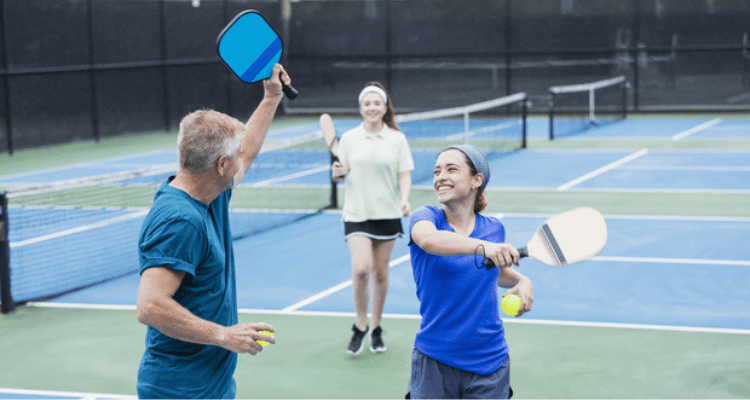
Upon relocating to Los Angeles and pursuing her studies at UCLA, the cumulative effects of the ibuprofen she had consistently consumed from her early teens to late teens manifested. Her body experienced a shutdown, leading her doctor to diagnose her with kidney failure.
“There was a sort of halt,” she explains. “It felt akin to a train… suddenly, everything came to a standstill, and my body simply signaled, ‘Okay, we’re finished.’ It was a complete crash of everything at once.”
Irvine served as a tennis coach at both a country club and a high school. She would engage in tennis matches with her friends or play paddle tennis, a variant that eliminated the need for a serve. It was through some friends that she learned about a sport where she could utilize an underhand serve and participate in various tournaments.
In late 2018, Irvine experimented with Pickleball popularity just as the sport was gaining popularity. Within a few months, she transitioned to playing at a professional level.
After embracing pickleball, Ben Johns, a former tennis player, achieved the top ranking in the world. What makes Pickleball popularity appealing to a wide range of people is its quick learnability, with players ranging from children to senior citizens.
“According to Jamison, the beauty of this activity lies in its inclusivity. Grandparents have the opportunity to engage with their grandchildren, eight-year-olds can enjoy playtime with their grandmothers, and parents, fitting in between generations, can partake in the fun. This universal appeal sets it apart from traditional sports, making it a perfect pastime for everyone. Jamison believes that the only factor limiting its success was its name.”
2. Achieving proficiency in pickleball doesn’t necessarily require hitting the ball with force.
Pickleball is typically conducted on a court of dimensions similar to that of badminton, featuring a firm playing surface. However, if a hardcourt is unavailable, alternative hard surfaces such as a gymnasium floor can be utilized. The serving technique involves an underhand serve to the player positioned diagonally across the court. It is a rule that each side must allow the ball to bounce once before engaging in volleying.
A distinct feature distinguishing it from tennis is the presence of a non-volley zone extending seven feet on either side of the net. Referred to as the “kitchen,” if you direct the ball into this designated area, your opponent is required to allow the ball to bounce before returning it.
As a novice in Pickleball popularity, Irvine discovered that she could level the playing field against stronger opponents by honing her skills in an efficient short game. In reality, during the initial months of her engagement with the sport, she dedicated herself to developing a soft game, opting for finesse over hitting the ball forcefully.
Irvine likes to tell beginners: “Less is more.”
“The less you do, the better you’re actually going to be. The more you’re in trouble, the softer you want to hit, which is just so counterintuitive, especially for tennis players,” she says.
It’s a strategy that can be adopted by individuals of all ages, from children to seniors, allowing them to quickly earn points.
“According to Jamison, achieving success is possible whether you adopt a finesse approach as a touch player or embrace power tactics for a more enjoyable experience. The most skilled players excel at combining both styles. Additionally, seniors can effectively counter the play of younger, aggressive opponents.”
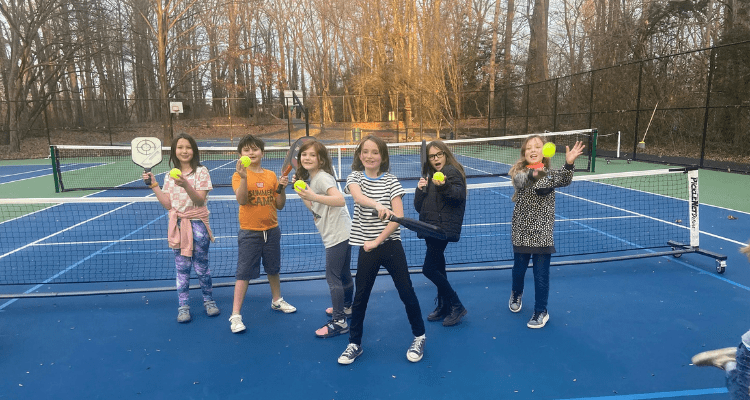
“Rather than reaching an age where you have to leave the sport, you have the opportunity to continue participating. This is what I find appealing about pickleball. There’s no age limit forcing you out; instead, you’re progressing into it as you age.”
3. Engaging in pickleball contributes positively to children’s self-esteem and mental well-being.
Jamison and his partner, Hope Tolley, witness the leveling effect of pickleball when introduced to schools. Through the videos and materials they supply to educators for disseminating the rules, one can observe children swiftly grasping the game and engaging in it with confidence.
Pickleball exudes an informal, competitive, and inclusive essence. Engage children in hitting drills without the need for a net. Improvise nets by using badminton or volleyball nets placed on the ground and secured between bikes, trash cans, or chairs.
Pickleball popularity is experiencing significant growth within middle school and high school physical education programs, and it is increasingly establishing itself as both an intramural and club sport in educational institutions nationwide.
“Jamison notes that alongside the exponential growth witnessed in schools, certain organizations are eager to initiate travel team structures resembling those in other youth sports. Despite the widespread prevalence of travel teams, emphasizing elite players with intense practice and play formats has demonstrated a tendency to result in burnout, particularly among younger participants.”
“Pickleball can harness the inclusive and open play formats, which are rapidly expanding the game, to benefit children. The emphasis should be on offering playing opportunities that nurture players of various skill levels and abilities, avoiding the exclusion of children through conventional travel formats that involve player cuts.”
In pickleball, like in any sport, there may be players who are more proficient, but the difference in skill levels is not as pronounced. Individuals spanning various age groups can participate in competition, including at the highest echelons of the sport.
At 34 years old, Irvine is successfully competing with players who are 15 years her junior. Meanwhile, Anna Leigh Waters, the world’s top-ranked women’s player, is 16 years old.
“I consistently advise individuals that when engaging in pickleball, one may not necessarily experience significant fatigue,” notes Irvine. “You’re unlikely to become noticeably winded, except in the case of playing singles. I often draw parallels with Pilates. You may not perceive it as an intense workout, but your muscles will indeed feel sore. It offers a distinct type of exercise, and I believe that’s a key factor contributing to the sport’s growth and popularity.”
However, there exists a more profound connection that binds Americans to Pickleball popularity and to one another.
4. Pickleball is a social activity, with everyone being a member of the community.
Tolley, the managing director for recreational programs at USA Pickleball, perceives the atmosphere when she’s present at the courts. According to her, once you arrive, individuals extend invitations for you to join them on their court.
“They welcome you with open arms, encouraging you to join in, even without knowing you or your playing abilities,” says Tolley, who engages in Pickleball popularity activities with her two children, aged 16 and 13. “The current spontaneous expansion of pickleball is driven by its enjoyable nature, social aspects, and the sense of community it fosters. Therefore, what parent wouldn’t want their child to be part of a sport that embodies these fantastic qualities?”
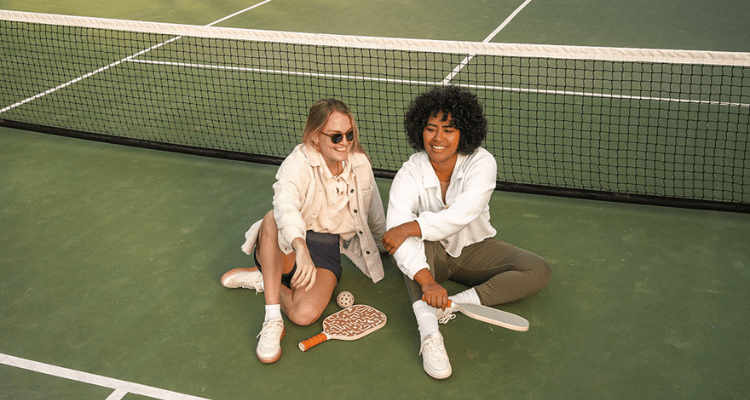
Pickleball has gained immense popularity as a doubles sport primarily due to its social aspect. Irvine has observed that the primary attractions at professional tournaments are the doubles and mixed doubles events, where top players actively participate. This is attributed to the fact that the spectators attending these events are also avid pickleball players. Moreover, the fans themselves often engage in doubles matches.
Joan, the wife of Congressman Prichard, is acknowledged for coining the term for the sport. A graduate of the University of Washington, she had a fondness for observing nearby collegiate crew competitions. The term “Pickle Ball” specifically alluded to races featuring non-starter rowers participating in “pickle boat” races solely for recreational purposes.
“Pickleball” accurately characterizes a sport passionately pursued by Irvine and numerous enthusiasts. Engaging in the sport on a full-time basis, she sustains herself through it. The notion brings her happiness, regardless of the duration of her professional pickleball career.
“While I possess a strong competitive nature, I remain appreciative of the opportunity. I excel at maintaining a delicate balance, acknowledging the reality that, Jessie, there’s currently no other sport where you can engage in this. Therefore, focus on competitiveness on the court, but off the court, enjoy yourself, smile, and all will be well.”
“You’re currently in the lead. Even if you don’t win the game, Jessie, you’re still coming out on top.”
Coach Steve, also known as Steve Borelli, has served as an editor and writer at USA TODAY since 1999. Over a decade, he dedicated himself to coaching the baseball and basketball teams of his two sons. Presently, alongside his wife Colleen, he fulfills the role of sports parents for a high schooler and a middle schooler.